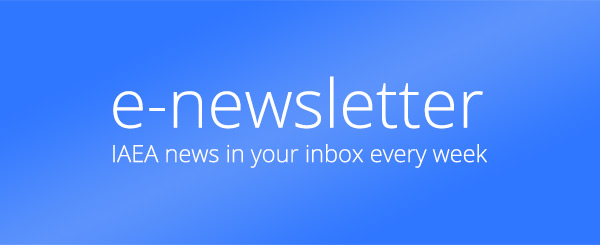Multimedia technologies, 3D-visualizations, digital libraries, internet research reactors, simulators - all these and other modern techniques were discussed, together with current educational methodologies and trends on an annual meeting on networking nuclear education.
31 educators and trainers from 26 countries met last week in the IAEA headquarters, to share last year's achievements and results from their national and regional network activities for supporting high quality nuclear education. Update and follow up on the implementation of their common Action Plan since July 2014, as well as the development of common strategies and an updated Action Plan for the coming biennium were part of the meeting agenda.
Nuclear education is of upmost importance for developed and developing countries, not only for energy production, but for all the peaceful uses of nuclear science and technology: human health, agriculture, water management, industry, etc. In September 2014, the International Atomic Energy Agency (IAEA) General Conference, in its resolution GC(58)/RES/13, acknowledged once more the importance of collaborations towards the development and adoption of integrated national and regional strategic planning approaches to strengthen university nuclear education programmes, by taking advantage of the activities of regional education networks.
Over the past years, the regional educational networks fostered by the IAEA have grown, improving communication and developing common understanding, in close cooperation with national and regional education networks and thematic networks, and have been exchanging information and experience as well as implementing actions to address common issues in the area of nuclear education.
Their main priorities are grouped in five main categories: human resources development, which includes teachers development, students opportunities, education quality and benchmarking; outreach from education and training institutions towards schools and the society, usage of e-learning and innovative technologies to support high quality education; cooperation mechanisms, among institutions and networks, and inside the basic triangle industry, academy, government; development and sharing educational material, protecting intellectual property rights through appropriate licensing mechanisms, like Creative Commons.
During the meeting participants were updated on the IAEA's activities related to nuclear education and nuclear education networks, as well as recent activities of NKMS and current projects and priorities. Activities from other IAEA groups and projects impacting or impacted by nuclear education activities were presented also by IAEA staff, like Research Reactors Coalitions, Safety education Strategy, and Catalogue on outreach activities towards schools, being developed under TC project RAS0064.
A lecture on learning objects repositories and available supporting technologies was delivered by an international consultant; participating experts made presentations on their nuclear education experiences and best practices.
The Networks were familiarized with the content and scope of the new IAEA coordinated research project on sustainable education in nuclear science and technology and were encouraged to consider active involvement in the initiative. 29 proposals were received up to now for L53003, and are currently under evaluation.
Participants made their proposals and recommendations, acknowledging IAEA for the meeting, and suggesting topics that should be considered in the future
- Creating an electronic catalogue of best practices and methodologies for outreach activities towards schools and society.
- Actively mapping national, regional and/or subject oriented networks relevant for nuclear education.
- Expanding the Integrated Data Base usage, further developing it and complementing with a Learning Objects Repository.
- Updating the Status and Trends in nuclear education document to support decision makers (based on the of IAEA publication NG-T-6.1, Vienna, 2011), but creating a living electronic tool where to collect information.
- Collaborating with nuclear education networks to provide support to teachers and trainers, encouraging the use of new pedagogical methods and techniques for teaching nuclear disciplines and providing specific training for development, delivery and administration of e-learning.
- To continue supporting the development and sharing of educational material.
The technical meeting successfully met its objectives. Awareness, knowledge sharing and coordination are critical for systematically addressing national and regional educational needs, as well as for long term sustainability of initiatives undertaken through educational networks


